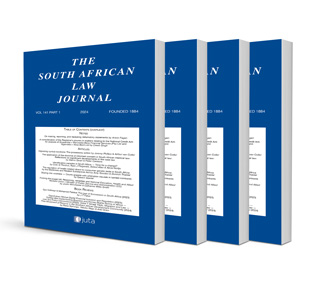Abstract
The high incidence of sexual abuse of pupils by teachers in South African schoolshas a profound effect on the constitutional rights of children, especially the right to a basic education. There is a comprehensive legal framework in terms of which steps could be taken against perpetrators. Despite this, and as a result of the intricacy and inconsistent implementation of existing measures, perpetrators are not appropriately disciplined. This exacerbates the infringement of the constitutional rights of victims. The failure to take action against perpetrators exposes education authorities to delictual claims for harm suffered by victims. Instituting claims based on vicarious liability against education authorities would serve the goals of deterrence and of victim compensation. To determine whether a claim based on vicarious liability could succeed in South Africa, we compare the development of vicarious liability in certain common law countries in the context of institutional sexual abuse of children. The conclusion is that such a claim could be successful if the constitutional duties of teachers, the constitutional rights of pupils, and elements of power, control, trust, and intimacy in the relationship between teacher and pupil point to a close connection between the teacher’s employment and the unlawful act. We conclude that, where a coherent strategy is adopted, sexual abuse could be prevented if education authorities were to focus on the implementation of preventative measures. We make recommendations which could assist in developing a coherent prevention strategy and simultaneously reduce the possibility of claims for vicarious liability against the department.
